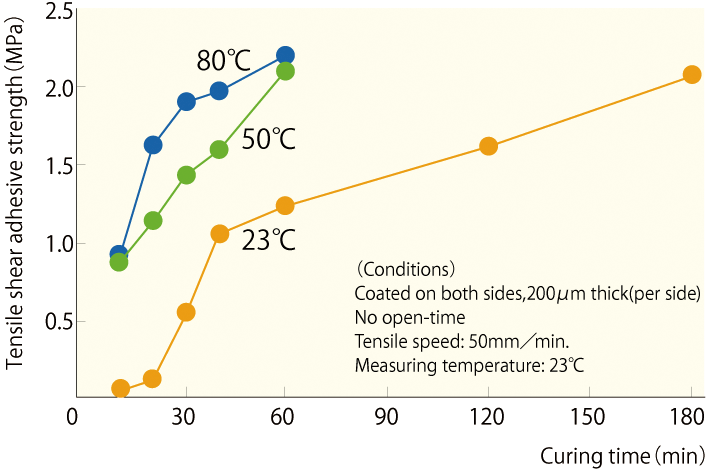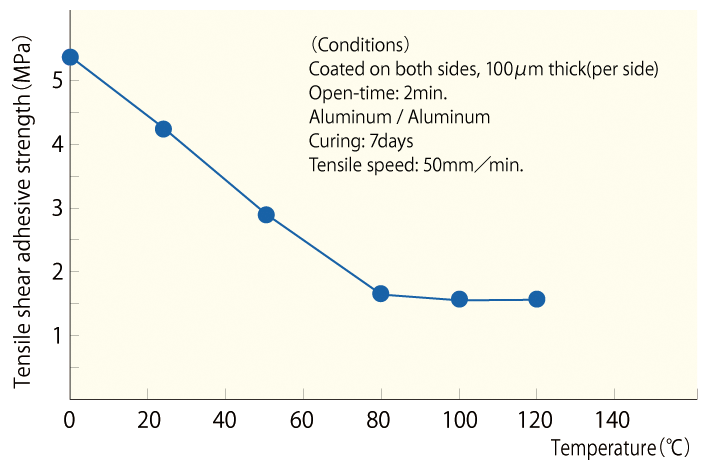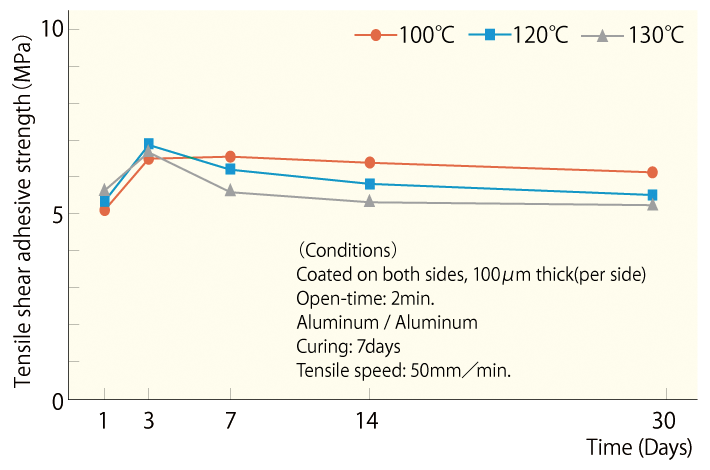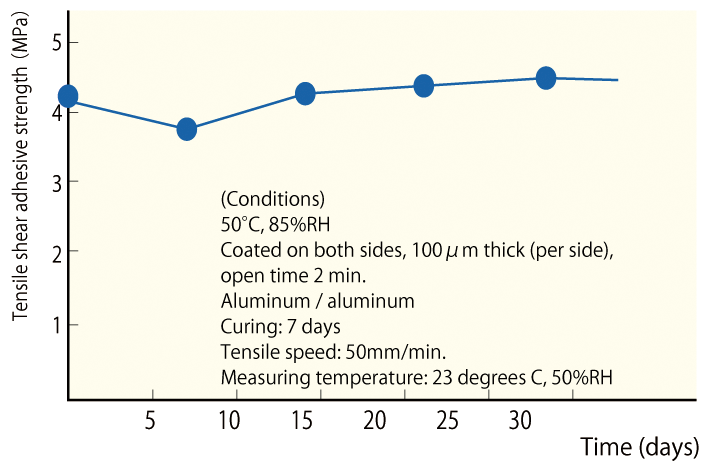Adhesive Sealant & Lubricant
Elastic Adhesive Cemedine Super X No 8008
Cemedine Super X is an innovative one-part, quick cure adhesive with three key features: "Pressure-sensitive adhesion", "Elastic adhesion" and "Solvent-free adhesion", which are the ideal properties of adhesives. It is used around the world.
Features
Multi-purpose adhesive for high-performance bonding of numerous materials.
Super X products allow for adhesion of various types of plastics, rubbers and ceramics over an extensive range, and also over different types of metals. These products provide excellent adhesion over a very extensive range of materials, eliminating the need for selecting a particular adhesive for each type of material, as in the case of conventional adhesives.
One-part solventless type providing quick curing at room temperature
Curing reaction is caused by moisture absorbed from the air. Pressure-sensitive range is reached in this curing process about 10 min after application. If adherends are put together during this time, they bind instantaneously as in the case of rubber contact adhesive, eliminating the need for temporary fixation. Easy-to-use, safe, and clean adhesive featuring one-part solventless capable of quick curing at room temperature is provided.
High durability
Super X as elastic adhesives does not peel off. Once materials are adhered, Super X provides durability in the range from low temperature (-60°C) to high temperature (120°C). Because of the rubber state of the hard film, the Super X sufficiently follows expansion, shrinkage and other changes of adherends.
Siloxane-free
There is not including low molecular weight cyclosiloxane. (D3 to D10 Cyclosiloxane compound)
Application
- For bonding application that requires initial rise strength.
- For bonding applications of dissimilar materials with different coefficients of thermal expansion.
- For bonding applications that require durability, such as thermal cycling.
- There are two ways to use: single sided and double sided.
Please use properly depending on the material and the conditions to be attached.
[Method 1: Single-sided application]
- In the case of porous material.
- In the case of the bonding area is small.
[Method 2: Double-sided application (like contact cement)]
- In the case of non-porous materials such as metal, plastic and ceramic.
- When the initial rising adhesion strength is required, such as warped parts, adhesion to vertical surfaces, adhesion of heavy materials, etc.
Initial curing process

Representative test data
Initial curing speed by environmental temperature

Tensile shear strength on each temperature

Tensile shear strength after heat aging

Tensile shear adhesive strength after High-temperature and High-humidity

Adhesive strength for various types of adherends
| Adherends | Tensile shear adhesive strength after 7-day curing |
||
|---|---|---|---|
| Metal | Steel plate (SPCC, SPCD) | 3.32 | CF |
| Aluminum(*1) | 4.26 | CF | |
| Stainless steel | 2.24 | AF | |
| Copper | 3.62 | CF | |
| Plastics | Polycarbonate | 3.29 | CF |
| Bakelite | 4.43 | CF | |
| ABS | 3.10 | CF | |
| Unplasticized polyvinyl chloride | 3.08 | CF | |
| Styrene | 2.40 | CF5 AF5 | |
| Acryl | 3.22 | CF | |
| 6-nylon | 3.28 | CF | |
| FRP(*2) | 2.92 | CF | |
| Polypropylene(*3) | 2.77 | CF5 AF5 | |
| PET(Polyethylene terephthalate) | 2.22 | CF3 AF7 | |
| PPS(Polyphenylene sulfide) | 1.60 | AF | |
| PPO(Polyphenylene oxide) | 3.16 | CF | |
| PAR(Polyarylate) | 1.10 | AF | |
| Others | Slate | 1.01 | MF |
| Plywood | 3.60 | CF | |
CF:Cohesion Failure, AF:Adhesive Failure, MF:Failure Modes
Coated on both sides, 50µm thick (one side),tension speed between adherends: 50mm/min
*1 and *2: Surface preparation causes adhesive strength to become uneven; it must be confirmed in advance.
*3: Primer (Cemedine PP-7F) to be used.
Adhesive strength for various types of rubbers
| Adherends | Peeling adhesive strength after 7-day curing |
||
|---|---|---|---|
| Rubbers | NBR | 0.27 | AF |
| Silicone rubber | 0.45 | AF | |
| EPDM | 0.60 | AF | |
| EPDM(*) | 2.73 | CF | |
| CR (Chloroprene rubber) (*) | 0.43 | AF | |
(*)…Degreasing by MEK after treatment by sandpaper (#120)
Chemicals resistance
| Chemicals | Tensile shear strength after dipping in chemicals |
|
|---|---|---|
| Initial Value | 2.24 | AF |
| Water | 3.00 | CF5 AF5 |
| Acetic acid (1% water solution) | 2.05 | CF4 AF6 |
| Acetic acid (10% water solution) | 1.22 | CF3 AF7 |
| Sulfuric acid (3% water solution) | 2.93 | CF2 AF8 |
| Sulfuric acid (30% water solution) | 2.05 | AF |
| Sodium hydroxide (1% water solution) | 2.84 | CF5 AF5 |
| Sodium hydroxide (10% water solution) | 3.29 | CF2 AF8 |
| Machine oil (Idemitsu: Mechanic Oil) | 2.96 | CF5 AF5 |
| Salt (10% water solution) | 3.16 | CF4 AF6 |
| MEK* | 0.11 | AF |
| n-Hexane* | 0.56 | AF |
CF:Cohesion Failure, AF:Adhesive Failure
Adherends : Stainless steel x Stainless steel
Surface preparation : Degreasing with MEK
Coating quantity : Coated on both sides 50μm thick (per side)
Open time : 2 min
Pressing : 2 pinches
Curing : 23°C50%RH x 7 days
Chemical immersion : 23°C x 7 days
Tension speed : 50 mm/min
Destruction State : Confirmation by seeing
*… Deterioration of solvent is observed, but no problem with short-time contact, for example, in washing.
Property
Description of the markexplanation




